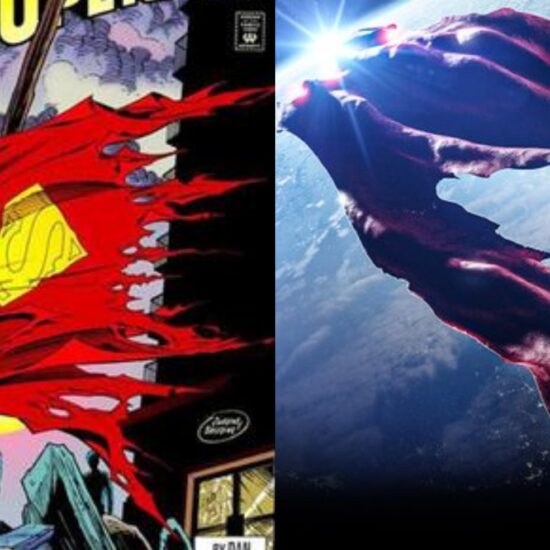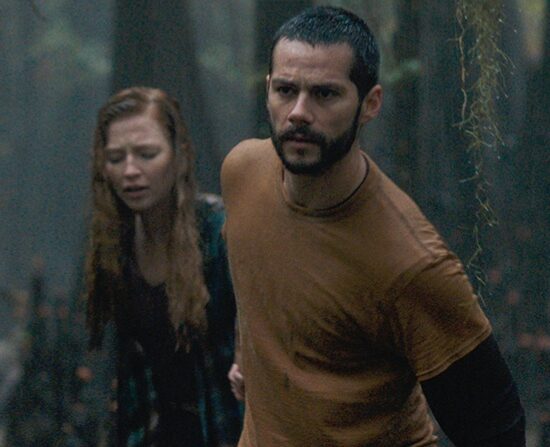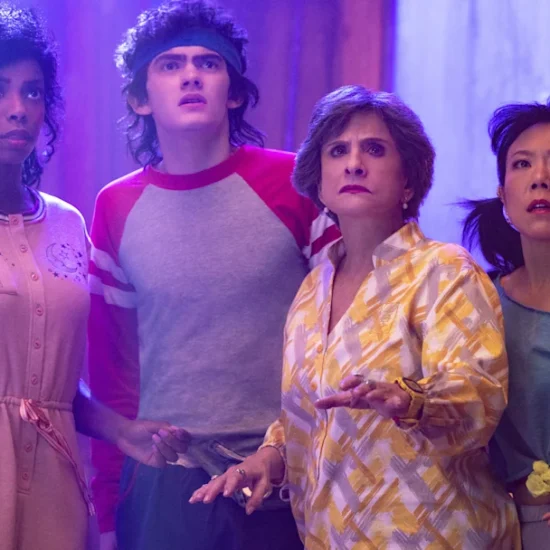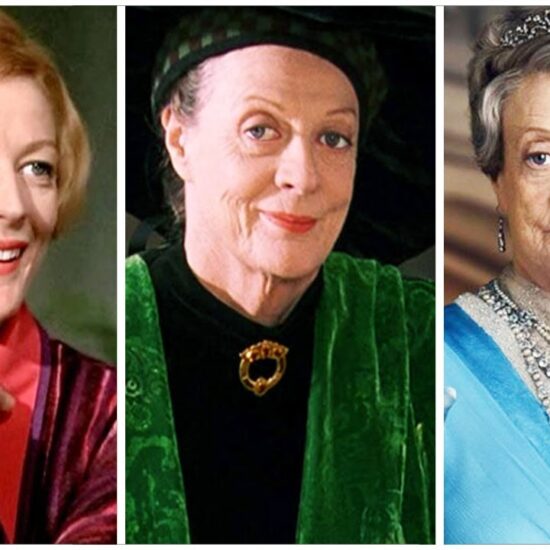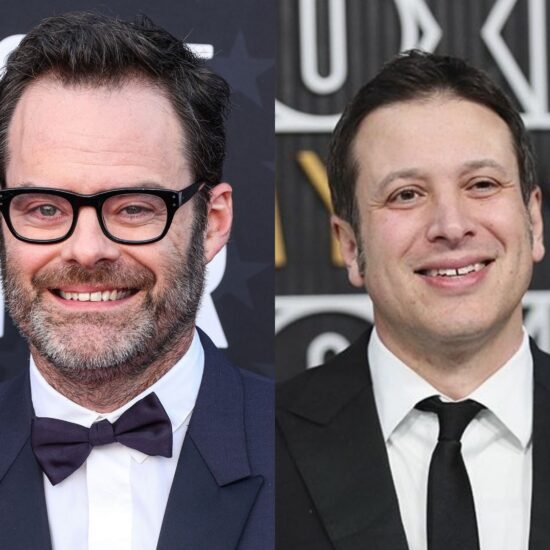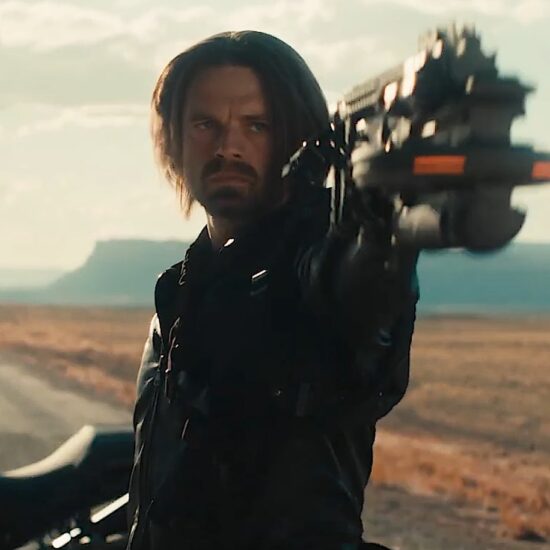
If one wanted to sum up the work of Ukrainian director Sergei Loznitsa, one could do worse than to quote that William Faulkner line, “The past is never dead. It’s not even past.”
Over more than a dozen films, both dramas and documentaries, Loznitsa has explored the impact that state violence, from World War II (in 2012 drama In the Fog and 2021 documentary Babi Yar. Context) to the conflict in Ukraine (2014 documentary Maidan, 2018 drama Donbass) has had and continues to have on Eastern Europe.
The unresolved tragedy of World War II is at the heart of Loznitsa’s new documentary, The Natural History of Destruction, which has its premiere in a special screening at Cannes this year. Loznitsa took his inspiration from a book by the late German writer W.G. Sebald, in this case a series of essays focused on the bombing campaigns — both by the Axis and the Allies — during the war.
The film, composed entirely of archive footage with no voiceover commentary, was started well before Russia’s invasion of Ukraine on Feb. 24, but current events give the film new urgency and tragic relevance.
Loznitsa himself has also been at the center of the debate around the war. On Feb. 28, he resigned from the European Film Academy (EFA) in protest of what he felt was the organization’s too timid response to the Russian invasion. But the director also opposed the Ukrainian Film Academy’s boycott of Russian filmmakers, a ban supported by the EFA. As a result, the Ukrainian Film Academy expelled him.
Speaking to The Hollywood Reporter ahead of Cannes, Loznitsa explained why the unlearned lessons of the past always come back to haunt us.
This is your second documentary, following 2016’s Austerlitz, that was “inspired” by a book by W.G. Sebald. What was it about his On the Natural History of Destruction that inspired you to make a film?
The essays [in the book] touch upon a very important question: Is it ever morally acceptable to target a civilian population during a war? That question, how we deal with it, is what connects the book with my film. After reading the book, I was inspired because this very important question still remains unanswered. If we look at what’s going on at the moment, we see that the armies of various states and the military leadership of various armies still consider it possible, even reasonable, to attack civilian populations and destroy cities, to target civilian infrastructure as a means of war.
You started this film well before the current war in Ukraine. How do you think it will be received now, given the context of the ongoing Russian invasion there?
The idea to make this film came in 2018, after I finished Donbass. It basically took three years to finance this film, because it’s all based on archival footage — we have two hours of archive footage in the film, and we all know that archive footage costs money. It’s pure coincidence that I’m finishing the film at the moment when this terrible war is going on between Russia and Ukraine. But I knew that this was going to happen a long time ago. I spoke about it many times. That’s why I made Donbass. You can go back and look at my interviews at the time. I said then: This isn’t a localized conflict, it’s the beginning of a big war. It seemed very obvious to me.
The idea of this war is a confrontation between two mentalities, two ways of viewing the world — the Russian imperialist and the Ukrainian democratic one — that are not compatible and which cannot coexist.
If we look at my current film, it looks at a principle that has become acceptable, almost standard, since the Second World War. Targeting the civilian population is now practically a rule of war strategy. At the moment, this principle is on display in Ukraine, but before, the same thing was happening in Syria, and the world seemed to just look on disinterested. I think this idea, this principle, of mass destruction needs to be analyzed and reflected upon, not just by the politicians, but by philosophers, by anthropologists, by sociologists, by all those who study human society.
But when we were financing this film and approaching different financing bodies, some representatives of German TV channels and foundations, for example, said: “There’s nothing to say, this topic has already been dealt with. We [the Germans] were punished for our actions. Case closed.” It’s exactly what Sebald points to in his essay, that the morality [of targeting civilians] is never discussed.
Why do you think that’s the case so long after World War II?
This is exactly the question I put in my film. Why, if everything is known, everything is researched and studied, why are these ethical blind spots still there? And here is where we enter into such concepts as collective guilt and collective responsibility. The concept of collective guilt, collective responsibility, was introduced by [German-Swiss philosopher] Karl Jasper in his 1946 essay The Question of German Guilt. Kasper talks about this guilt as a metaphysical phenomenon and about how the question of collective guilt should be raised by those who are guilty themselves. The sense of guilt should come from within the guilty party, rather than as an accusation coming from outside.
But nowadays this concept of collective guilt has been turned upside down. At the moment, there’s an attempt to ascribe collective guilt to all those who carry a Russian passport, or to the entire Russian culture. To make them all collectively responsible for the atrocities committed by the Russian troops in Ukraine. Now, I feel, like all citizens of the country, Russians have to take responsibility for the actions of their governments. But if we’re talking about the collective guilt, it is the Russians themselves who should be raising this issue. I don’t mean the criminal acts being committed by the Russian troops. Those, of course, should be tried in the International Criminal Court.
When you made a similar distinction recently, criticizing the call for a blanket boycott of Russian films and Russian culture, you were kicked out of the Ukrainian Film Academy.
Yes. I was very surprised and very disappointed with the Ukrainian Film Academy’s decision. But I’m absolutely against the proposed total boycott of Russian cultural figures and of Russian filmmakers who have actually been opposing the Putin regime, who have been condemning the war. Because if we boycott them, as well as everybody else, in a way we will be betraying them.
A good friend of mine, the Russian filmmaker Askold Kurov, made a documentary called The Trial, about the trial of Oleh Sentsov, the Ukrainian filmmaker who was imprisoned by Russia. He risked defying Moscow, risking his freedom and possibly even his own life. The film was shown widely in Ukraine and all over the world. It drew attention to Senstov’s plight and helped him get released [from prison]. So now, if we say a film has to be boycotted just because it was made by a Russian film director, I think it would be a betrayal — it would be simply indecent and immoral behavior.
Referring to The Natural History of Destruction, although the footage is more than 70 years old, many of the scenes could have come from yesterday’s news.
We see this idea, that it is still possible to destroy an entire infrastructure, to destroy a civilian population, still exists. Syria has shown us that it is possible to commit this sort of destruction without much resistance from the international community. The Russians have been bombing Syria for five years, which should have been enough time for the United Nations to wake up and start doing something. Again and again comes the question: Why is this happening? Why are people so insensitive when it comes to other people’s suffering? I don’t remember any public protests by any Ukrainian diplomat, for example, during the bombings of Syria. And right now the same bomber planes, the same pilots, are doing the same thing in Ukraine.
An expression that comes to mind is “chronocide,” the term you used in reference to your documentary Babi Yar. Context, which looks at the Nazi massacre of Kyiv’s Jewish population in 1941.
Chronocide is basically the absence of historical memory. And the condition in a society when the tragedies that occurred, the traumas that afflicted the society, are forgotten or not talked about. What happens is, sooner or later, these traumas resurface and come back to haunt the society that is trying to forget about them.
But of course, if we compare the Second World War to the war that is going on now in Ukraine, the fundamental difference is that the war between Nazi Germany and the Soviet Union was a war between the two totalitarian regimes. Whereas now we have a war between one totalitarian regime and a free democratic country, which is fighting for its freedom and for its independence.
The film is made up entirely of archived material. Where did you find it and what surprised you about what you found?
We have approximately 15 archival sources for the film. Mainly German, British and American war archives like the Imperial War Museum, the German military archives, but also from Pathé and the Associated Press. What surprised me was the footage of the night bombings, which was primarily a kind of technical footage they used to set their targets, but was very detailed. Then there was surveillance footage: The Allies filmed all of western Germany from the air, in really beautifully shot color footage, all very carefully, very precisely done. It was also interesting to see how both sides created their propaganda, and how the style of the German propaganda was very different from the style of the British.
How did they compare?
The Germans shot in a very romantic style, very classical. The camera always pointed up, displaying these heroic images of workers and fighters, using lots of contrast lighting to create more dramatic imagery. The British style was very different, more like news reporting, with more relaxed imagery, and looser, less precise composition. You could say the German style was very hierarchical. The British footage feels more organic and, in a way, much more democratic. So even in the images, you can see this confrontation between the two worldviews.
Seeing what is happening right now in Ukraine, what lessons has the world learned from the bombing campaigns of World War II?
Well, unfortunately we see that no lesson was learned whatsoever. This question was brushed under the carpet. This is really the saddest thing about it all, because what we are seeing is how these unlearned lessons of the past are coming back to haunt us. It’s obvious there should be laws, legal structures, or agreements to ban the use of these methods of mass destruction of civilians. And we mustn’t forget [in the Ukraine war] there is also this looming danger of the use of nuclear weapons, which would bring all of humankind under threat. My intention by making this film is just to put forward this question, to encourage people to think about this whole subject.
Interview edited for length and clarity.








